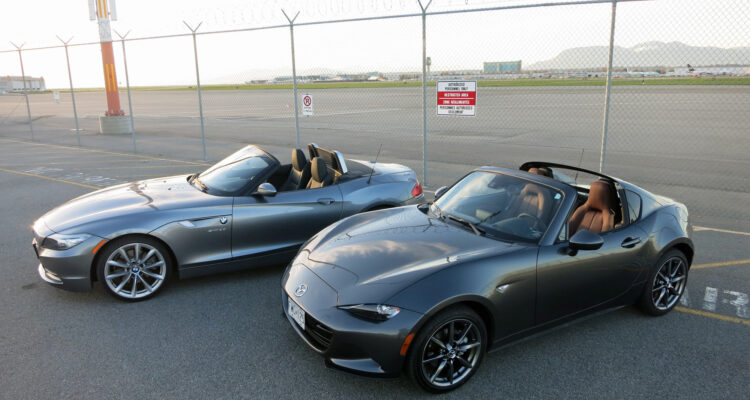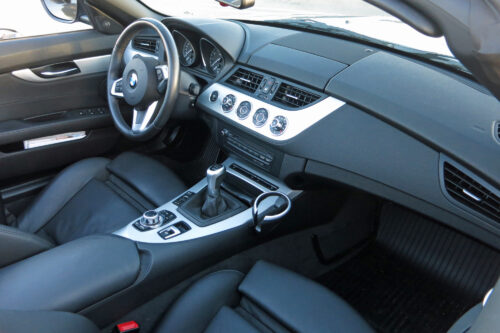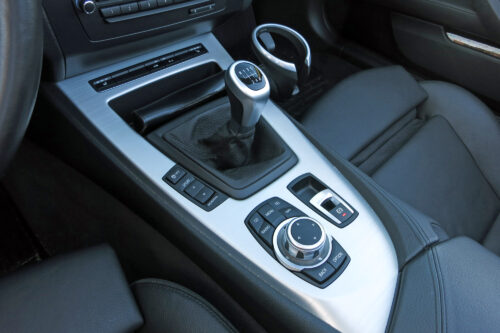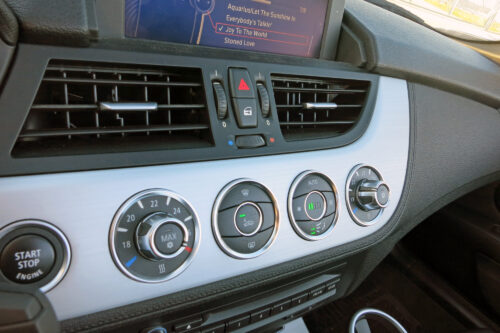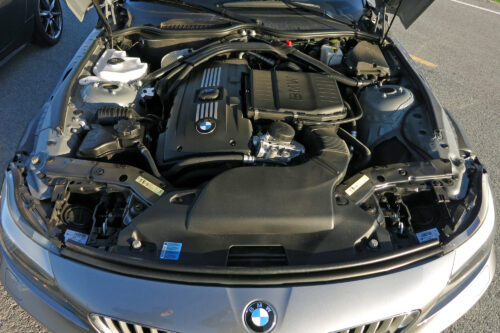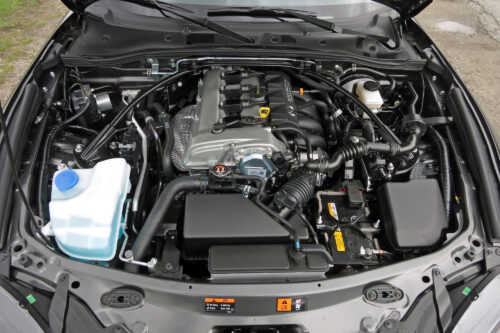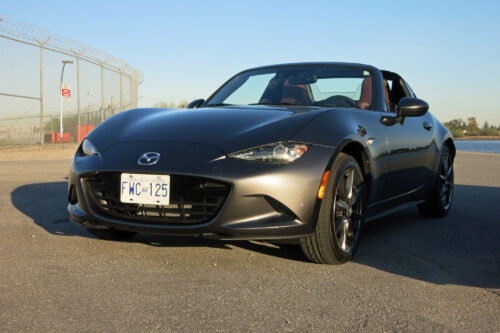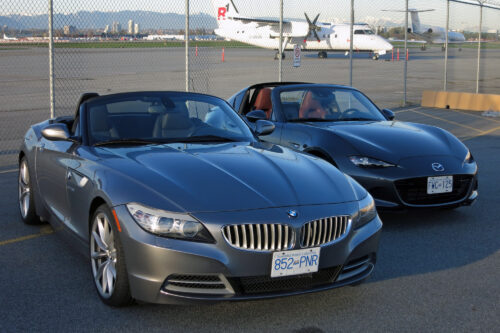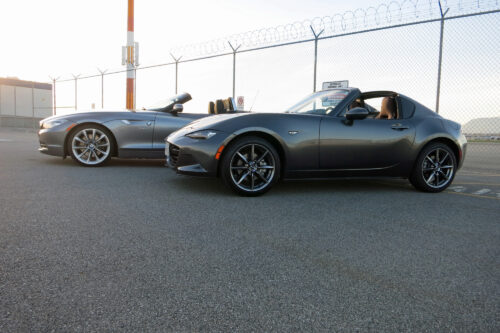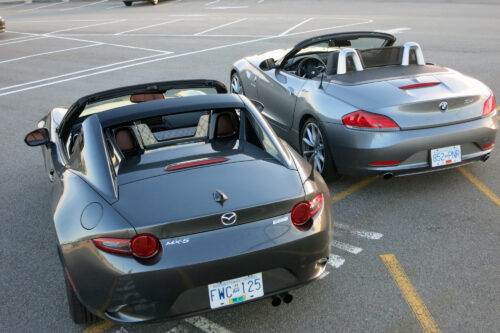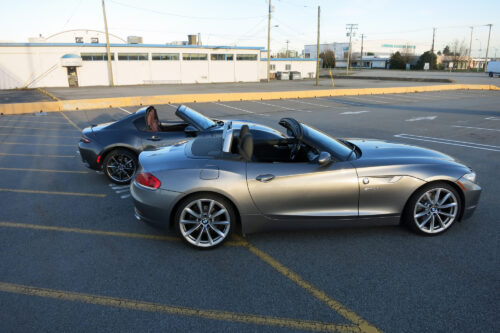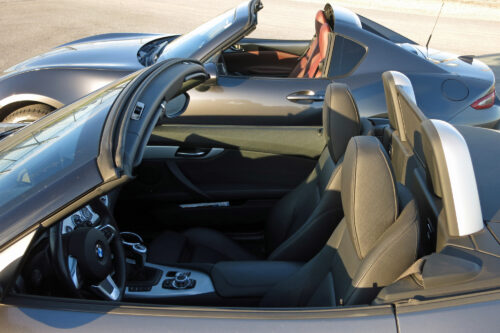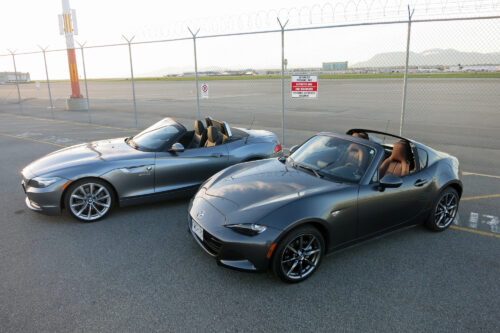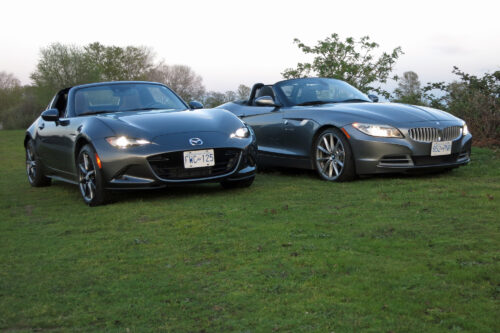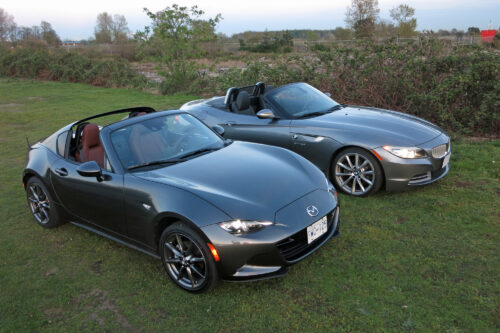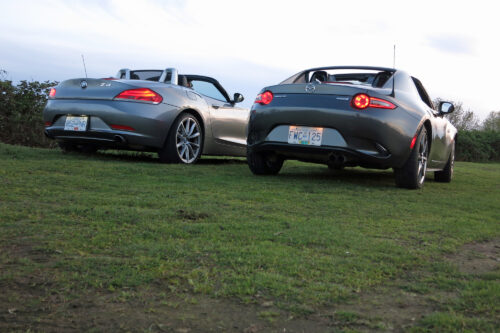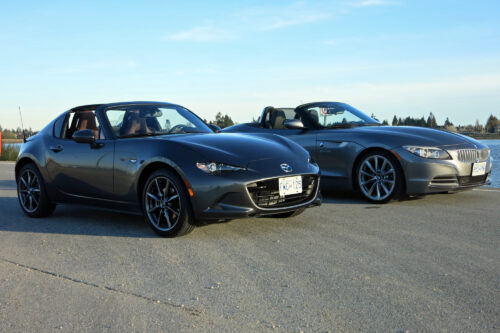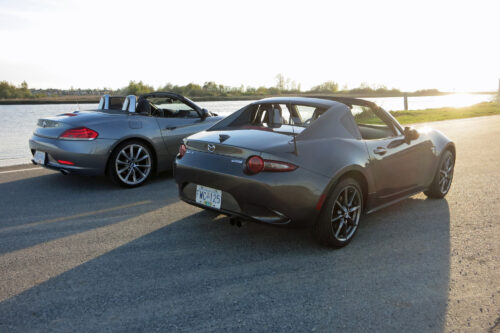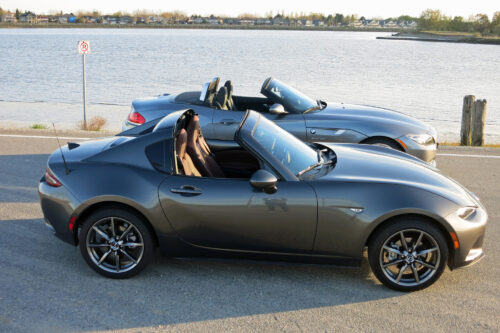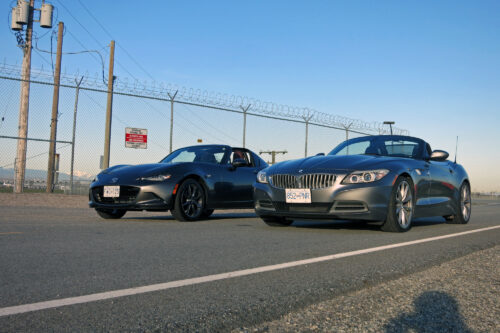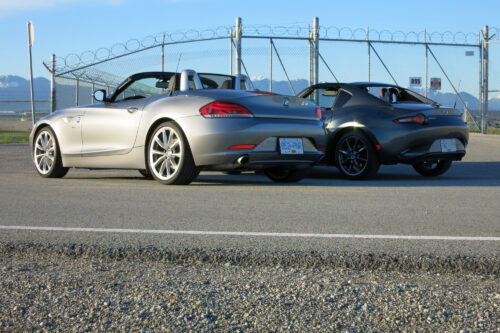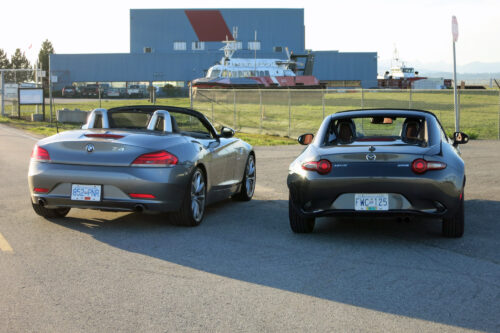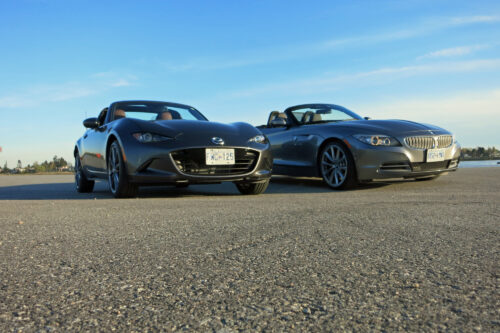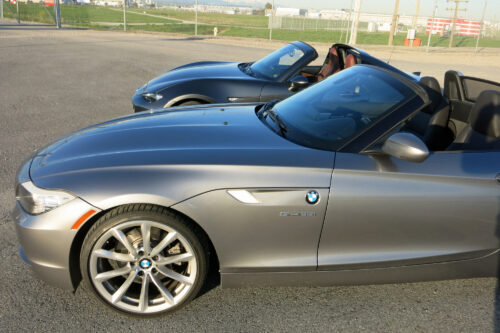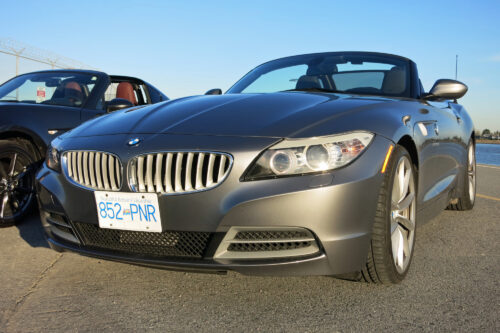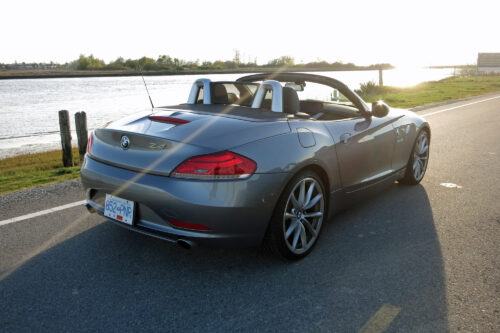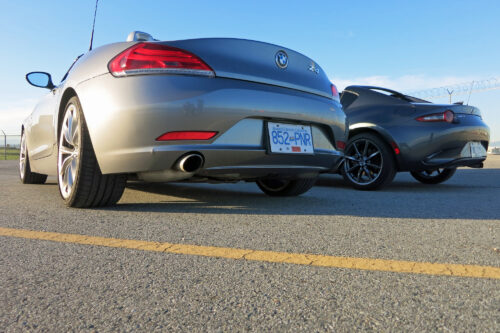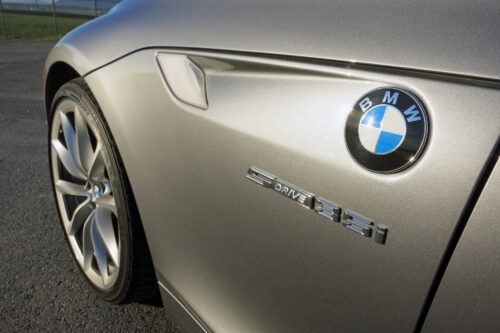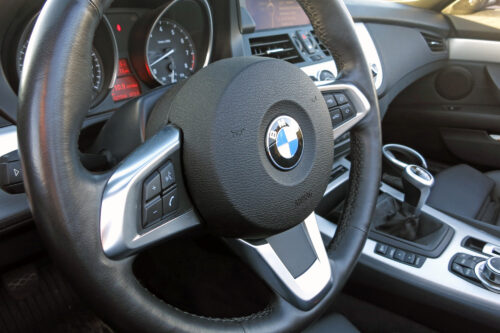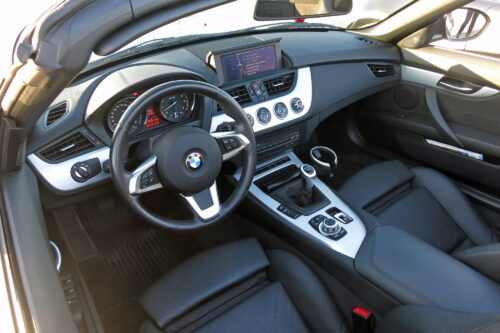$45,000: New Mazda MX-5 RF or used BMW Z4
This was going to be a fairly straightforward review of the sporty MX-5 RF, an entertaining hardtop convertible from Mazda, until I reflected upon its pre-tax MSRP of $45,295. That kind of green will buy a variety of gently used late-model premium two-seat roadsters, such as the Porsche Boxster, Mercedes-Benz SLK and SL, and the BMW Z4.
To illustrate my point, I’m going to use a 2009 BMW Z4 sDrive 3.5i hardtop roadster, which I purchased a couple of years ago. Essentially identical to a 2016 model (the final year of production), the vehicle had only 19,000 km on the clock and was equipped with the Sport Package, Executive Package, and a 6-speed manual gearbox; the latter being a “must have.”
Because I’ve owned German cars in the past, I purchased an extended 3-year 36,000 km warranty, which I should point out to prospective buyers is a price-negotiable item. Extended warranties are big money-makers for dealerships, so there’s plenty of room to discount.
Even with its extended warranty, the Z4, which had an original MSRP in the mid $70s, cost me way less than it would cost me to buy this week’s MX-5 RF test vehicle. With such low mileage, and coming from B.C.’s Okanagan Valley where a retired professional owned and occasionally drove the Z, it was indiscernible from new and had a completely clear CarFax history.
On to the cars.
The MX-5 RF is powered by a 2.0L SKYACTIV DOHC 4-cyclinder engine producing 155 horsepower at 6,000 RPM and 148 ft-lb of torque at 4,600 RPM. Though not big numbers, the free-revving 4-banger has only 1,114 kg to motivate with the help of a six-speed manual gearbox.
The Z4 is powered by a 3.0L twin-turbocharged inline 6-cylinder power-plant producing 300 horsepower at 5,800 RPM and 300 ft-lb of torque at 1,400 RPM. Despite its clear power advantage, the larger engine must enliven 1,500 kg of Z4 mass.
In terms of size, the Z4 is considerably wider and takes up approximately 13 additional inches of roadway. Despite size and weight differentials, the Z4 is approximately 3-seconds faster in a 0-100 km/h run.
Driving the two vehicles back-to-back on the same roads allows one to explore their respective characters and on-road performance. They each bring unique qualities to the driver’s seat, which may appeal differently to a range of drivers.
The MX-5 is incredibly light and agile on its feet, akin to a fleet-of-foot youngster on the soccer field. Directional changes in the MX-5 are instant and child’s play to control thanks to the Mazda’s perfect balance and inherent predictability.
The Z4 on the other hand is the fleet-of-foot adult on the pitch. Faster, stronger, and more powerful, but heavier and a wee bit slower to alter the direction of its greater mass. It is, however, the more refined athlete.
The MX-5 tends to convey every ripple and road abrasion to its occupants through its stiff underpinnings. This can become fatiguing over time, but I’ve got to give the diminutive Mazda full points for rigidity; potholes of all sizes do little to upset the car or produce shudder of any sort.
The Z4 delivers a much smoother motoring experience, filtering out small road imperfections before they reach the cockpit. Potholes though are another experience all together. Thanks to low-profile run-flat tires, the Z4 tends to hammer its way into potholes in a rather unholy manner, which has me curse the City each time it happens.
The Z4’s chassis is as rigid though as the policies of a certain president south of the 49th, and, its driving dynamics can be tailored between Comfort, Sport, and Sport+ depending on one’s mood and intended use, i.e. street or track.
In the driver’s seat, the MX-5 feels small, tightly fitting the pilot and leaving little room to straighten an elbow. The Z4 has a more spacious cockpit, which in contrast feels upscale and substantial. Its seats are larger and more suited to long journeys.
Like the MX-5, the Z4 places the driver just ahead of the rear axle, which emphasizes the roadster-like feel in both vehicles. The view out the windscreen differs though. The Z4 has a long bonnet that imparts a sense of size and substance while the MX-5’s sculpted hood is shorter and more “parkable.”
On the highway, roof down, the MX-5 delivers a greater sensation of speed due to its stiff underpinnings combined with far more wind noise and buffeting, even with the windows up. The MX-5’s persistent exhaust note can become a little tiring as well on longer drives.
The Z4 delivers a far more refined highway-cruising experience, which is smoother, quieter, and more relaxing. And thanks to its full load of torque at just 1,400 RPM, the Z4 dispenses a wealth of passing power without the need to downshift.
With its fuel-economy rating of 8.9L/100km city and 7.1L/100km highway, the MX-5 will squeeze a little more distance from a litre of petrol than the Z4. My average combined consumption in the MX-5 shook-out at 9.3L/100km, but I wasn’t trying to be frugal.
My average consumption in the Z4 is 10.9L/100km combined city and highway.
While both cars put a steel roof overhead during inclement weather, they exhibit unique personalities and bring differing benefits to their owners. The MX-5 has a long, impressive legacy as an affordable roadster in the “English tradition,” but with Japanese reliability and fastidiousness.
Spending $45 large on the MX-5 RF will net the proud owner a fine little sports car that is new and under full warranty. It would be a superior car to the Z4 on a tight autocross course and would likely provide years of reliable service.
Choosing to spend a similar amount on a gently used premium roadster would bring a different set of driving dynamics and greater luxury, but also the risk accompanying the purchase of a used vehicle; especially one that would likely cost more to operate and service.
But there you have it. Another option for the MX-5 RF buyer with $45K in his or her jeans.



